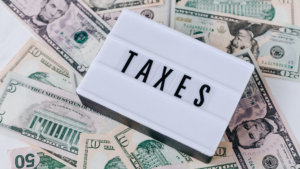If you’re a freelancer based in the UK, pensions for freelancers should be something you should look into. At the beginning of this year, I started a self-employed pension and my experience with the one I use has been a helpful setup. In this post, I’ll be detailing what pensions are and why you should consider investing in one.
*Please note this post contains affiliate links, which if you use, I will receive a small commission fee for.
When Should Freelancers Invest In A Pension?
It’s never to early to start a freelancer’s pension pot. It’s always a good idea to plan ahead for your future. I would recommend setting up your pension provisions as soon as you register as self-employed. I use a SIPP (Self-investment personal pension), which I will explain in the next section.
Types Of Pensions For Freelancers
State pension
In the UK, if you are registered as self-employed and pay national insurance each year, this will make you entitled to a state pension. However, the amount on a state pension is not enough to live completely off of. In the UK, it rounds up to about £168.80 per week.
This is why it’s important to consider setting up a private pension.
Personal Pension/ SIPP
SIPP’s (Self-Invested Personal Pensions) are a good way for you to have full control of how much you want to put into your pension and when you would like the deposit to be made each month. I use Penfold as my SIPP provider. Partnered with Starling bank, Penfold has a visually pleasing pension pot that requires no minimum deposit in order for you to create an account with them. They also offer a bonus of £25 to your pension based on your first deposit of £25, when you use this link to sign up.
SIPP’s also allow you to claim tax relief on the contributions you make towards it, as long as it is below £40,000 per year.
Another benefit of using personal pensions is that, in the UK, for every £100 you invest in a private pension, the government will add £25 into the fund as a tax break. The amount differs for Scottish residents.
NEST Pensions For Freelancers
The National Employment Savings Trust (NEST) is what PAYE’S may be automatically enrolled in. But you can still register for a NEST pension as a freelancer if you pay national insurance contributions, as well as some other criteria. You will have to pay a minimum of £10 in a NEST Pension, but you do have the flexibility to pay it in as often as you’d like.
If you are a freelance contractor, the company you are contracting with may offer you the option to be put on their pension scheme, which you could sign up to for the duration of working with them.
Also, if you have previously been employed as a PAYE elsewhere and have paid pension through that workplace scheme- you will still be entitled to that. This will boost your overall pension pot.
Summary of Pensions For Freelancers
Pensions for freelancers are a good asset to become a professional freelancer. If you are looking for some more tips on how to become a successful and professional freelancer, I have created a free course on 5 secrets of how to become a successful and professional freelancer. If you’re interested, feel free to sign up below:


